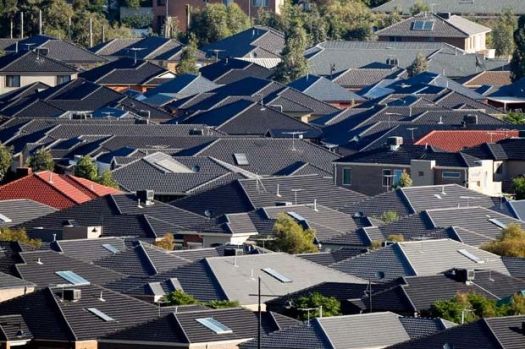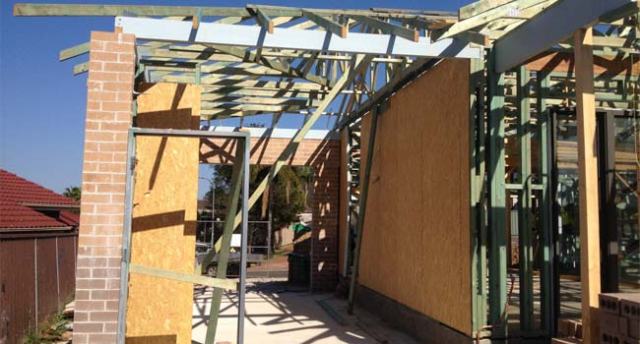Pic: Wikipedia.
Sydney’s most iconic social housing landmark is set for the wrecking ball after the Baird Government won an important victory over architectural and history defenders in its fight to get rid of a 1970’s ‘Brutalist’ masterpiece, the Sirius building in the Rocks.
New South Wales Minister for Finance, Services and Property Dominic Perrottet revealed on Sunday that stat government will continue to pursue a disposal of the controversial building after it failed to make the grade for inclusion on the state heritage register, clearing the way for its sale and demolition.
The decision is certain to infuriate sections of the architectural, social housing and planning communities who have been fighting to save Sirius on the basis it represents an unparalleled junction between bold architectural vision and livable social housing.
For many, like the Sydney Opera House, Sirius was just ahead of its time.
Having divided opinions since it was built during the preservationist Green Bans of the 1970s, the starkly modular concrete box-like structure of Sirius was designed by Tao Gofers with the specific intention of catering to elderly residents.
Although visually confronting to some, many of Sirius’ features – such as entry by secure lifts rather than stairs, plentiful solar access and views of the outside world – are still regarded as essential good design elements.
One of the most controversial and divisive aspects of the bid to divest Sirius is the Baird government’s persistent argument that the building is an not just eyesore but that it has outlived its useful life.
“Frankly, the Sirius building is not at all in harmony with the harbour and heritage that surrounds it,” Mr Perrottet said.
“Our city deserves better, and we now have a chance to deliver a building that genuinely complements our dazzling harbour, rather than sticking out like a sore thumb.
That view jars sharply with many opponents to Sirius’ demolition that argue the Baird government is simply pursuing a policy of sterilising the harbour foreshore with bland and uninspiring residential developments that erase both architectural diversity and the Sydney’s heritage as a city with a working harbour.
While urban planners, developers and architects have largely applauded the redevelopment of large social housing estates like Waterloo into mixed-use residential and commercial precincts to rehabilitate so-called disadvantage hotspots, there is still fiery debate over what qualities social housing should possess.
A major point of difference between architects and planners and policymakers is the notion that social housing or welfare properties should be built to modest and lower cost standards in order to discourage people taking advantage of the system and entrenching themselves in welfare dependency.
The counterpoint to that view is that with social housing becoming a major pressure point for communities like the elderly and lower waged essential workers priced out of the regular home ownership and rental markets, the government needs to back higher quality builds that can last the distance but still break the welfare dependency cycle by being as appealing to private investors as they are to government tenants.
Many argue that Sirius fits the latter category and is one of the key reasons it should not be torn down.
A the state’s real estate agent in chief, Property Minister Dominic Perrottet is having none of it and says Sirius is a lazy asset.
“Divesting this site is going to fund hundreds more new social housing dwellings for those vulnerable members of our society who need them,” Mr Perrottet said.
“Given the current waiting list for social housing, it’s not fair for the Government to just sit on valuable assets when we can make better use of them to generate housing for those who need it most.”
According to government estimates, the “Sirius site” – read that to mean the land without the building – should attract “bids of well over $100 million” with the money proceeds “set to fund more than 300 new social housing dwellings.”
That works out to a very modest $333,333 per new dwelling, but lets the Baird government financially justify the sale on the basis it will more than triple the number of social housing dwellings Sirius provides based on the proceeds of its sale.
A big unknown in the mix is whether there is sufficient appetite in the private market for a sympathetic refurbishment of Sirius as an architectural landmark that would appeal to private investors.
LAVA, the Laboratory for Visionary Architecture, last year released a vision that could transform Sirius from Housing Commission boxes to designer harbor front apartments.
Demolition or otherwise, the Baird government’s ‘asset recycling’ of social housing is gathering pace – especially in areas where land values have skyrocketed as the availability of inner city land becomes more scarce and expensive.
Comment below to have your say on this story.
If you have a news story or tip-off, get in touch at editorial@governmentnews.com.au.
Sign up to the Government News newsletter
2 thoughts on “Sirius to be demolished to fund social housing”
Leave a comment:
Most read
Scathing report finds little has changed at PwC
Qld council welcomes progress on massive battery system
Inquiry to consider how federal govt can address councils’ sustainability issues
‘Local’ procurement turns out not to be so local, committee hears
Another report finds local government falling down on cyber security



After Sirius was built, it seemed never again would governments or developers have the power to force people from The Rocks, to destroy their homes and community. Is another Green Ban for Sirius needed forty years after The Rocks Green Bans were lifted?
Classic building. Leave it there. Liberals be gone.